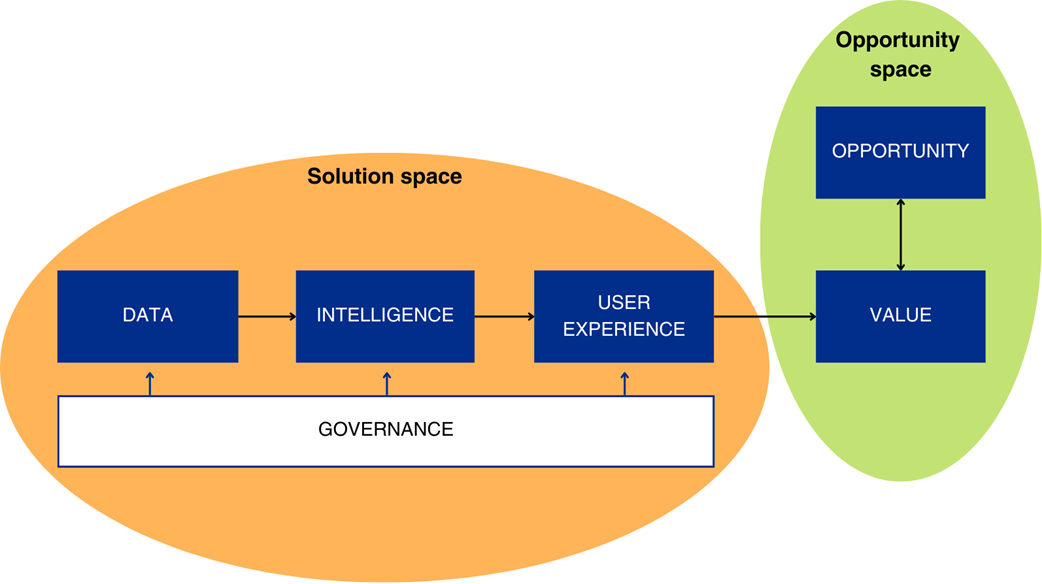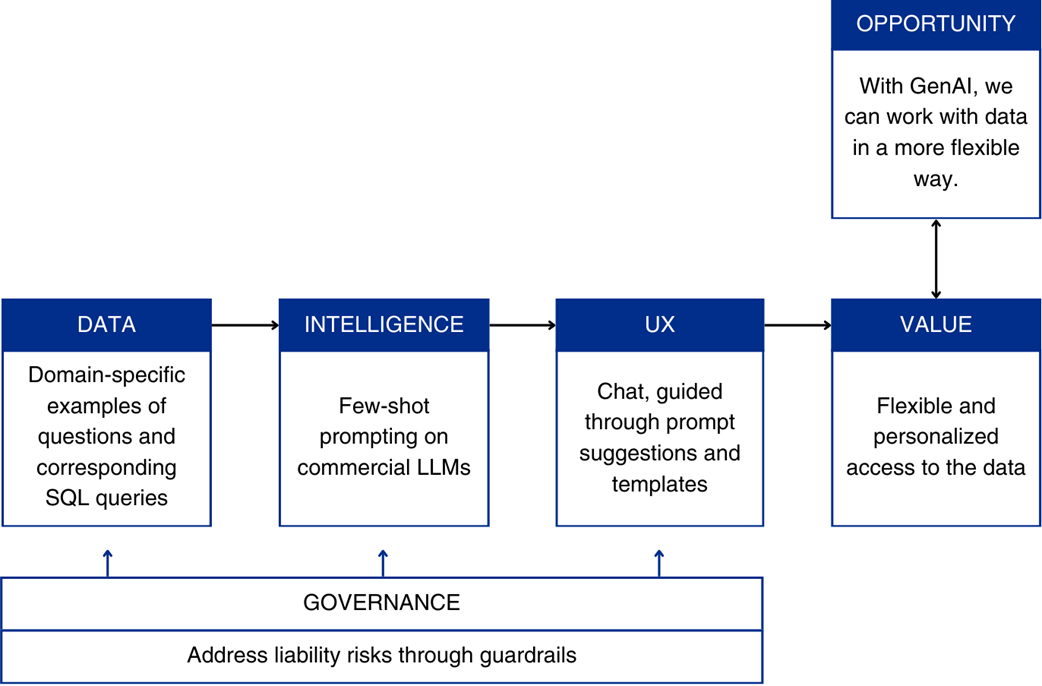1 Creating value with AI-driven products
AI can enhance nearly any digital product by optimizing operations, extending existing features, and enabling entirely new offerings—but plugging in a powerful model is not enough. AI products behave differently from traditional software: they rely on imperfect data, produce probabilistic outputs, and demand new development practices. Many initiatives fail due to unclear value, misaligned or poor-quality data, unrealistic expectations, and underappreciated customization work. This chapter sets the stage for creating real value with AI by outlining common pitfalls, the cross-functional skill set required, and a holistic mental model that connects data, intelligence, user experience, and governance so teams can align on goals, make trade-offs explicit, and build reliably.
A running example follows a financial analytics team that rushes to add a conversational interface to a crowded dashboard under executive pressure. The prototype falters amid high costs, privacy and compliance concerns, and poor real-world performance rooted in misaligned training data. Through user interviews and targeted evaluation sets, the team narrows scope to supported intents, redesigns the UI to guide queries, and implements guardrails to prevent prohibited advice. The launch brings mixed results—some users adopt the assistant while skeptics stick to the old workflow—exposing key lessons: don’t build AI for its own sake, align data with user needs, avoid over-indexing on cutting-edge models, guide users in the interface, set realistic expectations, and learn through iterative release and feedback.
To systematize AI development, the chapter introduces a practical blueprint: start with the opportunity space (customer need and tangible value), then shape the solution space across three interlocking components—data (the fuel), intelligence (models and orchestration, often with human oversight), and user experience (trust, transparency, guidance, and feedback). Governance considerations—privacy, safety, ethics, and compliance—constrain and inform each component. Because decisions ripple across the system (data quality drives model reliability; model behavior shapes UX; governance limits data collection and outputs), product leaders need fluency across disciplines. The book promises frameworks, technical foundations, diverse scenarios, and collaboration patterns to help teams understand capabilities and limits, prototype hands-on, manage stakeholder risk, and prioritize high-value opportunities that turn AI’s potential into durable impact.
A typical dashboard for financial analytics; the UX is crowded, but the product fulfills information requirements.

Mental model of an AI system

Mental model of a conversational assistant for financial data

Summary
- As a product manager, be prepared to shift your approach and mindset. You must get hands-on with AI technology and embrace its uncertainty and probabilistic nature.
- Base AI projects on clear, user-driven opportunities or strategic business goals instead of following trends or leadership mandates.
- Use concrete examples to align your data with real-world user needs and scenarios to improve model performance and relevance.
- Take an active role in prototyping, testing, and experimentation to better align AI capabilities with product requirements.
- When building AI systems, use the mental model from Figure 1.2 to understand and manage the interdependencies between data, intelligence, user experience, and governance.
- Communicate your AI’s capabilities and limitations transparently to avoid overpromising and underdelivering.
- Create user experiences that guide behavior, provide transparency, and mitigate errors inherent in probabilistic AI systems.
- Implement safeguards at every stage of AI development to identify and address risks such as privacy concerns, bias, and fairness.
- Focus on solving problems efficiently with appropriate models, avoiding the temptation to use cutting-edge solutions unnecessarily.
- Build empathy and alignment among diverse team roles—engineers, designers, and data scientists—by understanding their priorities and challenges.
- Launch AI features with a clear roadmap for evaluation and iteration, using user feedback to improve accuracy, usability, and adoption over time.
 The Art of AI Product Development ebook for free
The Art of AI Product Development ebook for free